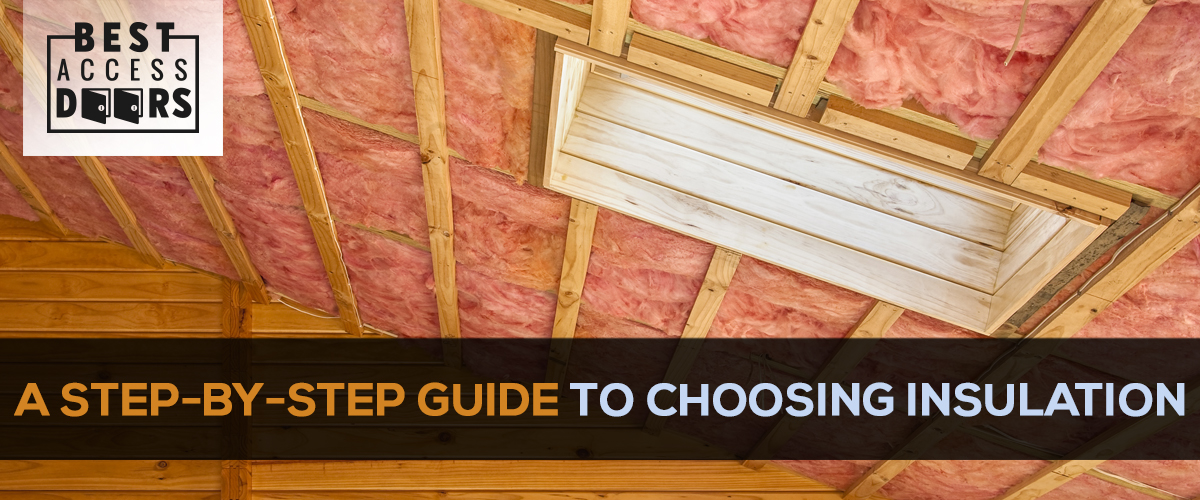A Step-by-Step Guide to Choosing Insulation
Posted by Best Access Doors on 2nd Jan 2019
No person wants to stay in a commercial building that gets hot every day, so building owners always install the latest HVAC systems to cool the building. But in some cases, the HVAC system isn’t enough to prevent heat from penetrating and making the inside hot. It’s the reason every building needs to have proper insulation.
However, there are many types of insulation that you can choose from, and each of them has different advantages. You need to know which ones will suit your commercial building and ensure the insulation will do its job perfectly. Fortunately, Best Access Doors is here to give you the knowledge on how to choose the perfect insulation.
Choosing Spray Foam Insulation
The first type of building insulation you can choose is spray foam insulation. Contractors also consider it an air barrier material that seals floors, walls, and ceiling cavities against airflow. You have to block off tiny cracks or spaces within the room to ensure no air escapes or goes in, which helps create airtightness.
Examples of spaces that you need to seal are spaces around light fixtures, electrical outlets, and where walls meet doors and windows. The commercial building’s roofing is the best place to apply the spray foam insulation, especially in new construction. You can also apply it on top of the existing spray foam insulation within the commercial building to lessen the use of insulation.
Choosing Fibrous Insulation
The next type of insulation you might want for your building is fiber. It’s a specific type that captures air within the fibers, preventing heat transfer through convection, which is the flow in gas in which the warmer areas move up and the fewer hot spots move down convection currents. Besides preventing heat transmission, fibrous insulation can also help to soundproof your building.
There are also different types of fiber insulation that manufacturers can create to provide more variety. Some types include:
Fiberglass: It’s the most common fibrous insulation that commercial buildings have. They are composed of fine fibers of glass and come in loose-fill or rolls. It also comes in different densities with individual associated R-values, and you can use it in areas within the building with limited spaces like the attic. It’s made from molten glass that a machine spins or blows into fibers.
Mineral Wool: Another form of fibrous insulation is mineral wool, which is human-made and comprises natural minerals or leftover minerals from molten metal. It usually has a ton of recycled industrial content and doesn’t need additional chemicals to make it fire retardant.
Plastic Fiber: Manufacturers create plastic fiber insulation from recycled plastic bottles, and manufacturers press the formed fibers into batt insulation. Plastic fiber insulation is very similar to fiberglass insulation, and manufacturers treat it to become a fire retardant. However, it will still melt if exposed to long hours of high heat.
Cellulose: If you want more environmentally-friendly insulation, you can choose cellulose. Cellulose has recycled paper products where manufacturers cut them into small pieces, fiberize, and pack them into cavities. They also add several compounds like mineral borate to increase their fire resistance.
Natural Fiber: Examples of natural fibers are wool, cotton, straw, and hemp, and manufacturers use them as another form of insulation. Cotton is nontoxic, which prevents the creation of toxic smoke during a building fire. However, the only downside to it is that it’s more costly than fiberglass insulation, and you need to treat it with borate to make it become fire retardant. Wool also needs borate treatment, but it can absorb water and remove the flame-resistant coating. And hemp is the most unheard of and the less used natural fiber insulation, but it offers the same R-value as other fibrous insulation.
Choosing Foam Board Insulation
If your commercial building has a building extension for maintenance personnel to use, mostly made of wood and steel studs, you can use foam board insulation. It’s best to get them because it provides efficient thermal resistance and reduces heat conduction through structural elements, most specifically wood and steel studs. Maintenance personnel won’t have any problems with the heat enveloping within the room.
Manufacturers usually use polyurethane, polyisocyanurate, and polystyrene to create foam board insulation. The polystyrene is transparent, colorless thermoplastic that machines can mold into foam boards, extruded polystyrene (XPS), and expanded polystyrene (EPS). EPS is composed of fused tiny plastic beads, while XPS starts as a molten material that machines press to form sheets.
Foam board insulation works effectively against moisture, so you have no worries about it becoming soaked with water. It’s also the only foam board that doesn’t have hydrochlorofluorocarbon (HCFC) during its production.
Since you now know the different types of insulation, you can expect that no heat will penetrate your commercial building. And if you’re currently in the process of constructing your commercial building, you can choose Best Access Doors for quality construction materials like access doors and panels. Contact us now to order them!
Share our story - get our 2024 Catalog for FREE!

